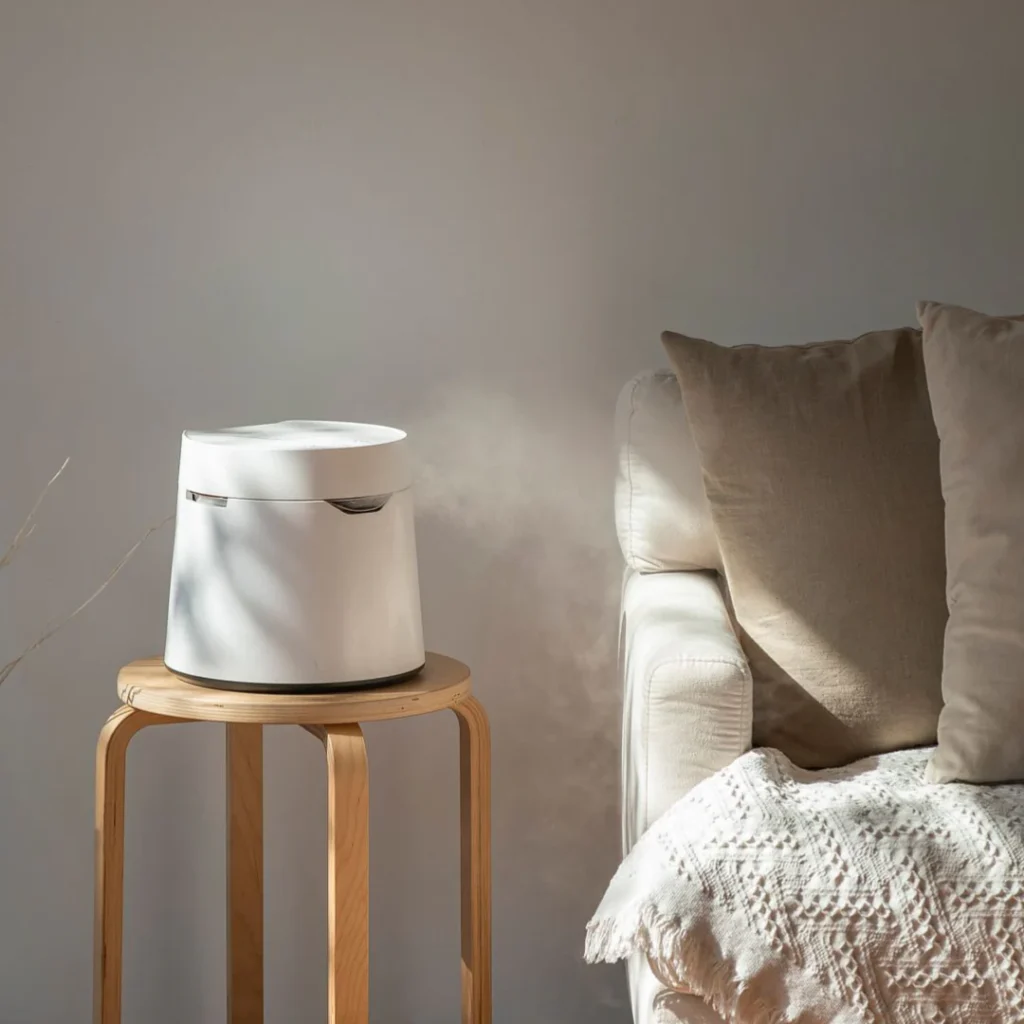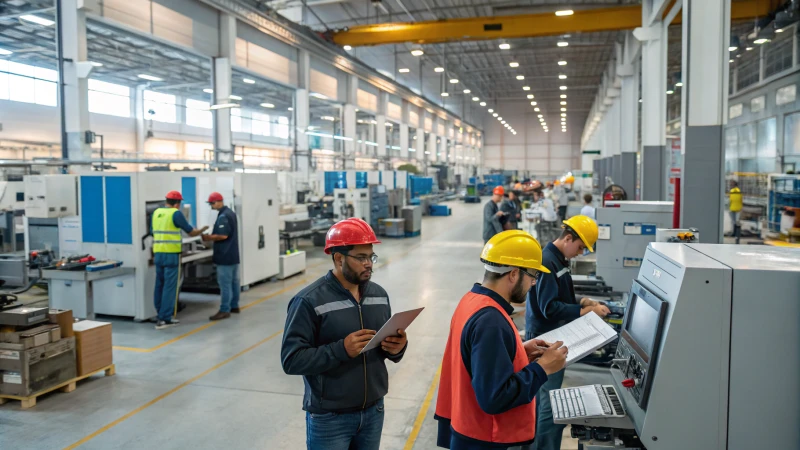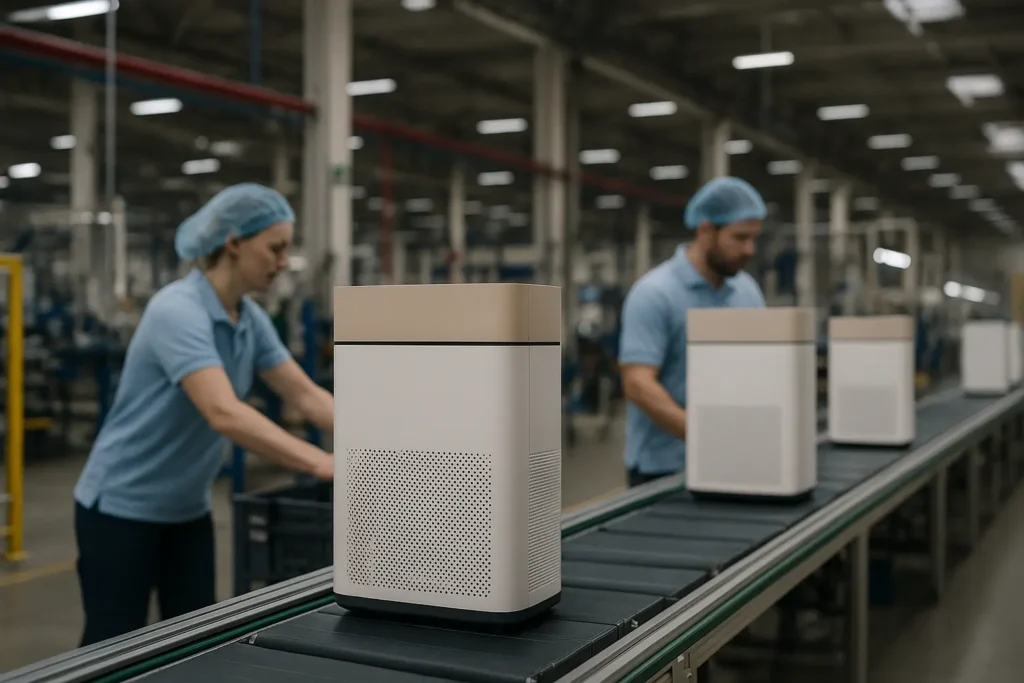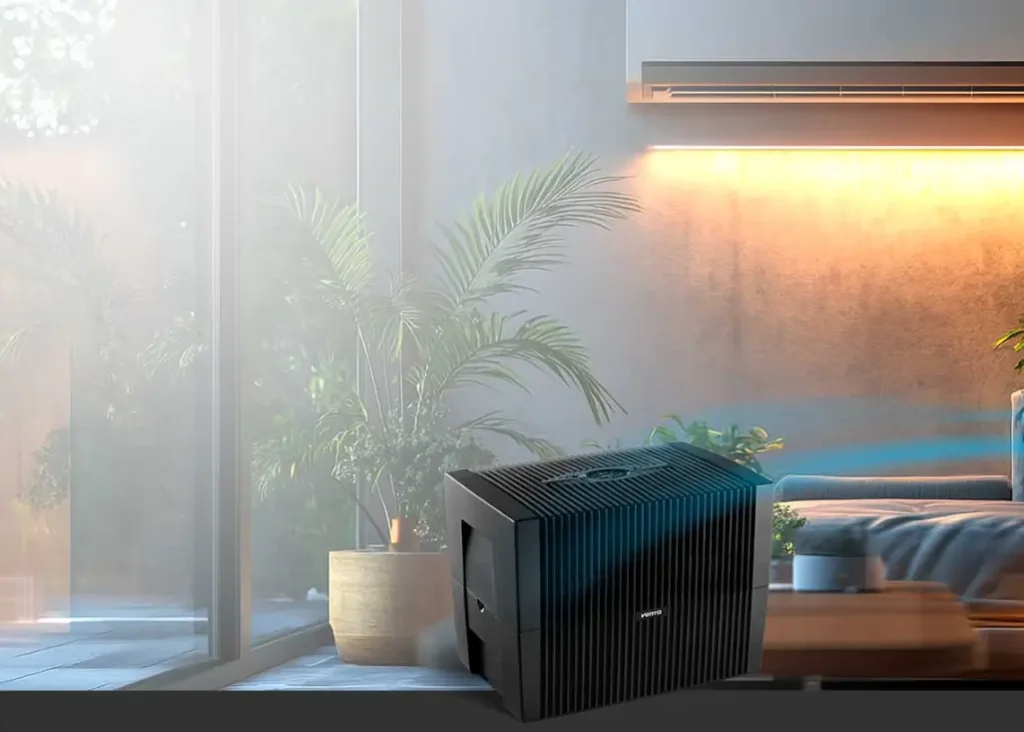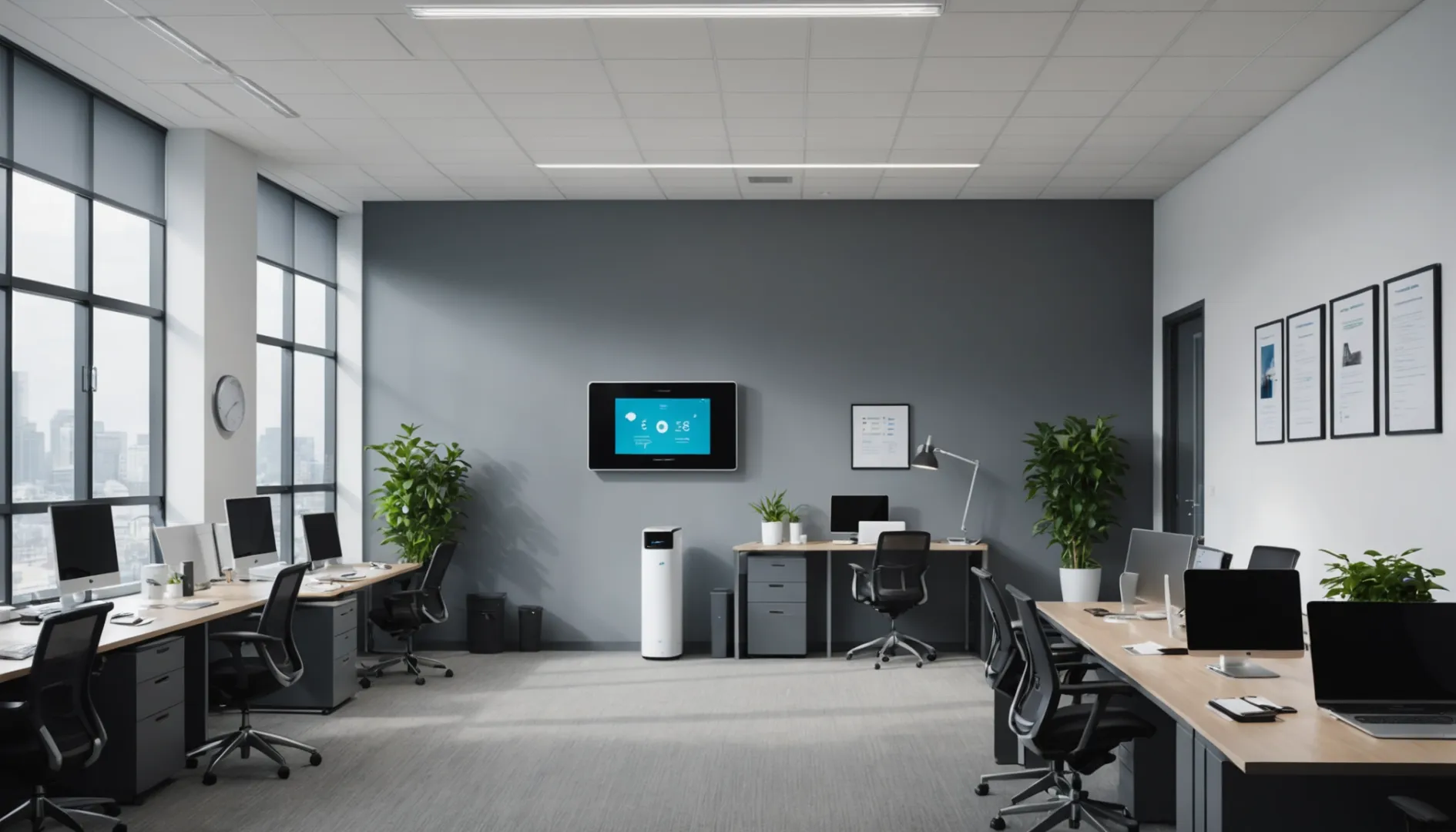
Trouver le purificateur d'air commercial idéal, c'est découvrir l'air frais des montagnes sur son lieu de travail.
Lorsque vous choisissez un purificateur d'air commercial, donnez la priorité à un purificateur d'air de haute qualité. CADRLe fonctionnement silencieux, la polyvalence de l'installation, les capacités avancées des capteurs et la connectivité intelligente garantissent une purification efficace de l'air.
Je me souviens de la première fois que j'ai pénétré dans un bureau fraîchement purifié - c'était comme si je respirais pour la première fois. L'air était vivifiant, j'avais les idées claires et j'ai senti un poids s'envoler de mes épaules. Cette expérience m'a appris l'importance de choisir le bon purificateur d'air pour les espaces commerciaux.
La clé est de comprendre quelles sont les caractéristiques qui font vraiment la différence. Haut CADR garantit une purification efficace de l'air, même dans les grands espaces. Et, soyons honnêtes, personne n'a envie de subir le bourdonnement constant d'un purificateur bruyant alors qu'il essaie de se concentrer ou de se détendre. C'est pourquoi il est essentiel que le niveau sonore soit faible.
Il y a aussi la question de l'espace. Les options de montage, telles que les installations murales ou au plafond, libèrent de l'espace au sol et éliminent les risques pour la sécurité, ce qui est parfait pour les environnements animés tels que les salles de sport ou les hôtels. De plus, l'intégration de capteurs avancés permet d'obtenir des données en temps réel sur la qualité de l'air et bien plus encore.
Et bien sûr, dans notre monde intelligent, la connectivité n'est pas seulement un bonus, elle est essentielle. Elle permet un contrôle et une surveillance sans faille depuis n'importe où, ce qui ajoute une couche supplémentaire de commodité et d'assurance.
En tenant compte de ces caractéristiques, vous assurez un environnement plus sain à tous ceux qui franchissent vos portes.
Les purificateurs d'air commerciaux ont un CADR plus élevé que les purificateurs d'air résidentiels.Vrai
Les appareils commerciaux ont besoin d'un CADR plus élevé pour nettoyer efficacement de plus grands espaces.
Les niveaux sonores sont plus élevés dans les purificateurs d'air commerciaux.Faux
Les purificateurs d'air commerciaux sont conçus pour fonctionner à des niveaux de bruit plus faibles.
Pourquoi la CADR La performance est-elle cruciale pour les espaces commerciaux ?
Vous êtes-vous déjà demandé pourquoi certains espaces commerciaux semblent plus frais et plus sains que d'autres ? C'est une question de CADR performance.
CADRou Clean Air Delivery Rate, mesure l'efficacité avec laquelle un purificateur d'air élimine les polluants de l'air. Dans les espaces commerciaux, un CADR est essentiel pour assurer une purification efficace de l'air sur de grandes surfaces, afin de maintenir un environnement sain pour toutes les personnes présentes à l'intérieur.

Comprendre CADR en milieu commercial
La première fois que je suis entré dans une salle de sport récemment rénovée, je n'ai pas pu m'empêcher de remarquer l'air pur et vivifiant qui y régnait. J'ai découvert par la suite que c'était grâce à un CADR qui fonctionne silencieusement en arrière-plan. Le taux de distribution d'air pur (CADR) est une mesure essentielle qui indique la quantité d'air pur qu'un purificateur d'air peut fournir chaque minute. Imaginez que vous essayez de suivre le rythme d'un bureau animé ou d'un hall d'hôtel bondé - c'est là qu'un purificateur d'air plus performant est le plus efficace. CADR brille véritablement, car il garantit que tout cet espace reçoit l'air pur qu'il mérite.
Les espaces commerciaux sont comme les poumons de nos habitudes quotidiennes ; ils ont besoin de respirer tout comme nous. Ce sont des lieux très fréquentés, remplis de personnes et de divers niveaux de polluants. C'est pourquoi ils ont besoin de purificateurs d'air à haut rendement. CADR qui peuvent filtrer rapidement et efficacement les particules indésirables telles que la poussière, le pollen et la fumée. Je me souviens avoir visité le bureau d'un ami qui venait d'installer l'un de ces systèmes. C'était incroyable de voir à quel point l'environnement était devenu plus frais et plus agréable presque immédiatement.
L'impact de la CADR sur la santé et la productivité
Respirer de l'air pur, ce n'est pas seulement se sentir bien, c'est aussi se sentir bien et rester productif. Une collègue qui souffrait d'allergies m'a dit que sa productivité avait grimpé en flèche après que son entreprise eut investi dans des systèmes de ventilation à haute efficacité.CADR les purificateurs d'air. Une mauvaise qualité de l'air peut faire des ravages sur notre santé, entraînant des allergies et des problèmes respiratoires, sans parler d'une baisse de la productivité. Pour les entreprises, cela signifie qu'il faut investir dans des purificateurs d'air à haute efficacité énergétique. CADR améliore non seulement le bien-être des employés, mais aussi l'efficacité du lieu de travail, ce qui est tout à fait bénéfique.
En particulier dans les hôpitaux ou les salles de classe, où se trouvent des populations vulnérables, le maintien d'une bonne qualité de l'air intérieur (QAI) est crucial. Je me souviens avoir visité une école où l'on avait installé ces purificateurs, et la différence était palpable : l'air était plus pur, et les élèves semblaient plus concentrés et plus énergiques.
Choisir le bon CADR pour votre espace
Trouver le purificateur d'air idéal pour un espace commercial peut s'avérer décourageant. C'est comme choisir la bonne paire de chaussures de course : tout dépend de l'ajustement et de la fonction. Vous voulez un CADR qui corresponde à la taille et à l'usage de votre pièce. Les fabricants proposent des lignes directrices pour vous aider à déterminer ce dont vous avez besoin. Par exemple, les fabricants proposent des lignes directrices pour vous aider à déterminer ce dont vous avez besoin, HisoAir1 propose des modèles adaptés aux différents besoins commerciaux sans sacrifier l'efficacité énergétique ou le niveau sonore.
Intégrer des fonctionnalités avancées à un niveau élevé CADR
Dans le monde actuel, dominé par la technologie, les purificateurs d'air commerciaux sont de plus en plus performants grâce à des fonctions avancées telles que IdO connectivité. Je me souviens avoir été stupéfait lorsque j'ai appris que certains modèles permettaient de surveiller et de contrôler la qualité de l'air à partir de votre téléphone ! Ces appareils intègrent également de nombreux capteurs qui détectent les polluants tels que PM2.5 et les COV, offrant une approche globale pour maintenir une qualité supérieure de l'eau. QAI.
En outre, elles peuvent fournir des informations précieuses sur les tendances de la qualité de l'air au fil du temps, aidant ainsi les entreprises à prendre des décisions éclairées sur leur stratégie de gestion de la qualité de l'air. stratégies environnementales2. En tirant parti de ces caractéristiques avancées et d'une CADR les entreprises veillent non seulement à respecter les normes sanitaires, mais aussi à améliorer le confort et la sécurité de leurs espaces commerciaux.
Les purificateurs d'air commerciaux doivent avoir un CADR plus élevé que les purificateurs d'air résidentiels.Vrai
Un CADR plus élevé est essentiel pour nettoyer efficacement les grands espaces commerciaux.
Les purificateurs d'air portables sont privilégiés dans les locaux commerciaux.Faux
Les unités murales ou plafonnières sont privilégiées pour gagner de l'espace et réduire les risques.
Pourquoi les niveaux sonores sont-ils importants dans le choix d'un purificateur d'air ?
Je n'aurais jamais pensé que le bruit aurait autant d'importance dans le choix d'un purificateur d'air. Il s'avère que c'est la clé pour trouver le bon purificateur d'air pour une maison paisible ou un bureau productif.
Les niveaux sonores influencent le confort et l'efficacité d'un purificateur d'air dans votre espace. Les modèles les plus silencieux contribuent à maintenir la tranquillité, tandis que les plus bruyants peuvent la perturber.
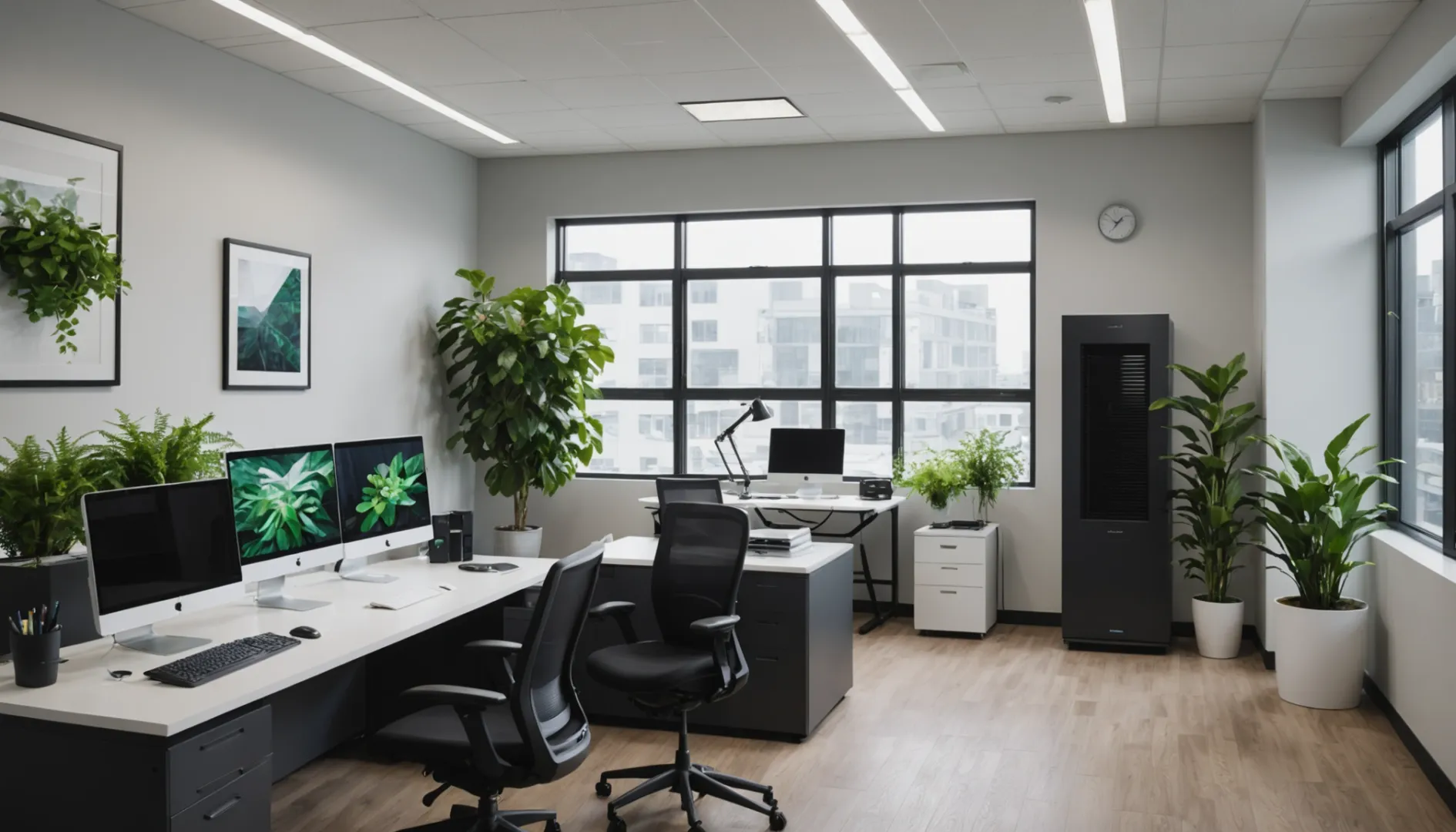
L'importance des niveaux de bruit dans différents contextes
Lorsque j'ai commencé à m'intéresser aux purificateurs d'air, je n'avais pas réalisé à quel point le bruit pouvait avoir un impact sur ma vie quotidienne. Chez moi, je chéris les moments de calme, surtout le soir, lorsque j'essaie de me détendre. A purificateur d'air plus silencieux3 est devenu essentiel, car même un léger bourdonnement pouvait perturber mon sommeil et accroître mon stress. C'est comme la différence entre une nuit de repos paisible et le fait de se retourner pendant des heures.
Dans mon espace de travail, le bruit est également un facteur décisif. Il m'est arrivé d'être incapable de me concentrer à cause du bruit de fond des équipements de bureau. C'est pourquoi le choix d'un purificateur d'air à faible niveau sonore peut faire toute la différence et contribuer à maintenir un environnement serein propice à la concentration. Il est surprenant de constater à quel point le taux de décibels4 de ces appareils peuvent jouer un rôle si important dans notre confort quotidien.
Équilibrer les performances et les niveaux de bruit
C'est un peu une question d'équilibre. Je veux un appareil silencieux, mais je ne peux pas faire de compromis sur les performances, surtout s'il s'agit d'un grand espace comme mon salon ou mon bureau. Certains purificateurs puissants sont naturellement plus bruyants, mais j'ai découvert que les nouvelles technologies permettent d'allier efficacité et fonctionnement silencieux. Des caractéristiques telles que réglages de la vitesse variable5 me sauvent la vie. Ils me permettent d'ajuster le niveau sonore en fonction de ce qui se passe autour de moi, par exemple en baissant le son pendant les réunions ou la nuit.
Innovations technologiques en matière de réduction du bruit
Grâce aux progrès technologiques, les purificateurs d'air d'aujourd'hui sont plus silencieux que jamais, sans pour autant perdre leur avantage. Certains intègrent des matériaux insonorisants ou des conceptions aérodynamiques pour réduire le bruit. J'aime la façon dont d'autres utilisent capteurs intelligents6 pour adapter leur fonctionnement en fonction de l'occupation de la pièce ou du niveau de bruit ambiant. Il est fascinant de constater à quel point les fabricants tirent parti de l'IA et de la technologie de l'information. IdO pour ajuster l'équilibre entre le bruit et la puissance de purification. En contrôlant ces appareils par le biais de systèmes domestiques intelligents, il est facile de s'assurer qu'ils fonctionnent toujours au bon volume.
Les purificateurs d'air commerciaux ont un CADR plus élevé que les purificateurs d'air résidentiels.Vrai
Les purificateurs d'air commerciaux sont conçus pour des espaces plus vastes, nécessitant un CADR plus élevé.
Les purificateurs d'air muraux sont moins courants dans les hôtels.Faux
Les modèles muraux sont populaires dans les hôtels pour économiser de l'espace et éviter les interférences.
Pourquoi envisager des purificateurs d'air muraux et des purificateurs d'air de plafond ?
Vous êtes-vous déjà demandé comment les purificateurs d'air muraux et de plafond pouvaient transformer votre espace ? Laissez-moi vous expliquer pourquoi ils changent la donne en matière de qualité de l'air intérieur.
Les purificateurs d'air muraux et de plafond permettent de gagner efficacement de la place, grâce à un fonctionnement silencieux et à une purification de l'air supérieure, en particulier dans les zones commerciales telles que les bureaux et les hôtels. Leur emplacement stratégique permet une intégration transparente et la technologie avancée des capteurs fournit des informations en temps réel sur la qualité de l'air intérieur, garantissant ainsi un environnement plus sain.

Efficacité spatiale
Je me souviens de la première fois que j'ai pénétré dans le minuscule studio de mon amie. Il était confortable mais exigu. Si vous avez déjà vécu ou travaillé dans un espace où chaque centimètre carré compte, vous apprécierez la façon dont les purificateurs d'air muraux et de plafond libèrent un espace précieux. Ce fut une révélation dans des endroits comme les salles de classe ou les gymnases, où l'équipement et le mobilier occupent déjà la majeure partie de la pièce. L'installation de ces purificateurs en hauteur, sur les murs ou au plafond, permet non seulement de les éloigner, mais aussi d'empêcher les petites mains curieuses de s'en emparer. C'est un moyen ingénieux de conserver un aspect ordonné et professionnel sans sacrifier la fonctionnalité.
Amélioration des performances
Je pensais que tous les purificateurs d'air étaient égaux, jusqu'à ce que j'apprenne l'existence des taux de distribution d'air pur (CADR). Les modèles muraux et de plafond affichent souvent des CADR plus élevés, ce qui signifie qu'ils sont comme des poids lourds dans le monde de la purification de l'air, prêts à s'attaquer à de plus grands espaces avec facilité. Lorsque j'ai visité un hôtel qui venait de se doter de ces appareils, j'ai remarqué que l'air était plus frais, comme si j'étais entré dans un refuge de montagne. Nombre de ces modèles sont dotés de systèmes de filtration avancés qui ne s'arrêtent pas à la poussière ou au pollen ; ils peuvent également traiter les COV et d'autres polluants, ce qui les rend parfaits pour garantir une bouffée d'air frais dans les environnements animés.
Fonctionnalités avancées
Le passionné de technologie en moi adore le fait que ces purificateurs ne se contentent pas de purifier l'air, mais qu'ils le font de manière intelligente. Des capteurs intégrés surveillent les particules, la température, l'humidité et même l'occupation de la pièce. J'ai assisté une fois à une conférence où la pièce était étouffante jusqu'à ce que le purificateur d'air se mette automatiquement en marche pour ajuster les conditions. Cette surveillance en temps réel revient à disposer d'un conseiller personnel en matière de qualité de l'air intérieur, qui ajuste en permanence les réglages afin de maintenir le meilleur environnement possible.
Niveaux de bruit
Si vous êtes comme moi et que vous appréciez le calme et la tranquillité, en particulier pendant le travail ou la détente, vous adorerez le fonctionnement silencieux de ces purificateurs. J'avais l'habitude de reculer à l'idée qu'une machine bruyante puisse perturber ma concentration ou mon sommeil. Heureusement, ces modèles sont conçus pour la tranquillité, parfaits pour les bureaux ou les hôtels où le silence est d'or.
Connectivité et contrôle
À l'ère du tout intelligent, pourquoi nos purificateurs d'air devraient-ils être différents ? Je suis fan de tout ce qui peut être contrôlé depuis mon téléphone, et les purificateurs d'air muraux et de plafond offrent justement cette possibilité. Les purificateurs d'air muraux et de plafond offrent justement cette possibilité. IdO vous pouvez modifier les réglages à distance, pour que votre espace soit toujours confortable et sain. Investir dans technologie intelligente7 signifie que vous n'achetez pas seulement un appareil, mais que vous gagnez un partenaire pour le maintien du bien-être à l'intérieur.
Les purificateurs d'air commerciaux ont un CADR plus élevé que les purificateurs d'air résidentiels.Vrai
Les unités commerciales sont conçues pour des espaces plus vastes, nécessitant un CADR plus élevé.
Les purificateurs d'air muraux permettent de gagner de la place dans les locaux commerciaux.Vrai
Ils évitent les interférences et optimisent l'efficacité de l'espace dans les zones très fréquentées.
Comment les capteurs avancés peuvent-ils améliorer la gestion de la qualité de l'air ?
Vous êtes-vous déjà demandé comment des capteurs avancés pouvaient transformer la façon dont nous gérons la qualité de l'air ? C'est comme si nous avions un super pouvoir qui nous permet de voir ce qu'il y a dans l'air et d'agir instantanément !
Les capteurs avancés révolutionnent la gestion de la qualité de l'air en fournissant des données précises et en temps réel sur les polluants, permettant des interventions rapides et des décisions éclairées pour des environnements plus sains.
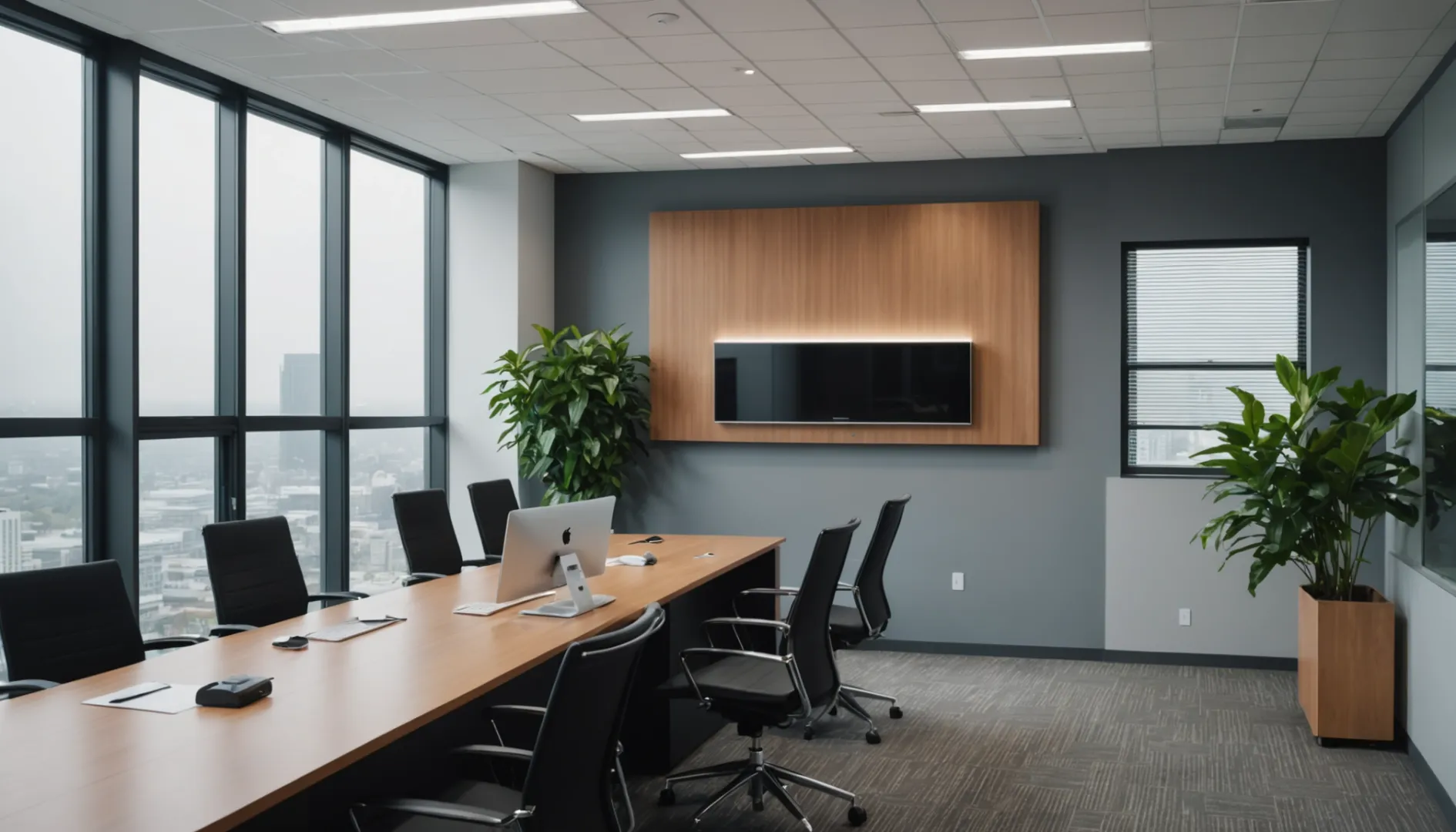
Surveillance en temps réel pour une action immédiate
Capteurs avancés, tels que PM2.5 et COV Les détecteurs de métaux offrent des données en temps réel, ce qui est essentiel pour l'évaluation de la qualité de l'air. systèmes de gestion de la qualité de l'air8. Ces capteurs peuvent détecter des changements infimes dans les niveaux de pollution, ce qui permet aux autorités de prendre des mesures immédiates, telles que l'émission d'avertissements publics ou l'ajustement des opérations industrielles pour réduire les émissions. Cette approche proactive nous aide à mieux respirer.
Intégration avec IdO et l'IA
L'intégration de capteurs avancés dans l'internet des objets (IdO) et l'intelligence artificielle (IA) permettent une approche plus globale de la gestion de la qualité de l'air. IdO peuvent connecter plusieurs capteurs dans une ville, créant ainsi une carte détaillée des niveaux de pollution de l'air. Pendant ce temps, l'IA peut analyser ces données pour prédire les tendances futures et suggérer des mesures efficaces pour lutter contre la pollution de l'air. stratégies d'intervention9. C'est comme avoir une boule de cristal pour la gestion de la qualité de l'air.
Amélioration des résultats en matière de santé publique
En utilisant des capteurs avancés pour surveiller en permanence la qualité de l'air, les responsables de la santé publique peuvent mieux comprendre la corrélation entre les niveaux de pollution et les problèmes de santé. Cette connaissance permet de mieux cibler les campagnes et les interventions de santé publique, ce qui se traduit en fin de compte par une amélioration de l'état de santé et une réduction des coûts des soins de santé. Tout le monde y gagne !
Amélioration de la conformité réglementaire
Pour les industries, les capteurs avancés constituent une méthode fiable pour garantir le respect des réglementations environnementales. Ces capteurs peuvent offrir un retour d'information constant sur les niveaux d'émission, ce qui permet aux entreprises d'ajuster les processus avant qu'ils ne dépassent les limites légales. Cette approche proactive permet non seulement d'éviter les amendes, mais aussi d'améliorer la réputation de l'entreprise en tant qu'entité respectueuse de l'environnement.
Planification urbaine fondée sur les données
Intégrer les données des capteurs dans la planification urbaine revient à donner un nouveau souffle aux villes. Les urbanistes peuvent utiliser les données de ces capteurs pour concevoir des espaces plus verts ou placer stratégiquement des zones tampons vertes qui absorbent les polluants sur la base de données réelles - c'est ainsi que nous pouvons améliorer la qualité de l'air dans les zones urbaines. Cette approche fondée sur des données probantes garantit que le développement urbain s'aligne sur les objectifs de l'UE en matière de qualité de l'air. la durabilité environnementale10La Commission européenne a également mis en place un programme de formation à l'intention des jeunes, afin de faire de nos villes des lieux où il fait bon vivre.
Les purificateurs d'air commerciaux ont un CADR plus élevé que les purificateurs d'air résidentiels.Vrai
Les appareils commerciaux ont besoin d'un CADR plus élevé pour nettoyer efficacement de plus grands espaces.
Les purificateurs muraux sont moins courants dans les espaces commerciaux.Faux
Les purificateurs muraux permettent d'économiser de l'espace et sont de plus en plus populaires dans les zones commerciales.
Conclusion
Lors du choix d'un purificateur d'air commercial, donnez la priorité à la qualité de l'air. CADRLe système de gestion de la qualité de l'air est composé d'une série de capteurs, de faibles niveaux sonores, d'options de montage au mur ou au plafond, de capteurs avancés et d'une connectivité intelligente pour une gestion optimale de la qualité de l'air.
-
Découvrez la gamme de purificateurs commerciaux haute performance HisoAir. ↩
-
Trouver des stratégies pour améliorer la QAI dans les environnements commerciaux. ↩
-
Découvrez les meilleurs purificateurs d'air silencieux pour des environnements paisibles. ↩
-
Découvrez comment les indices de décibels affectent les niveaux sonores des purificateurs d'air. ↩
-
Comprendre comment les réglages de la vitesse permettent de contrôler les niveaux de bruit. ↩
-
Découvrez comment les capteurs optimisent les performances et réduisent le bruit. ↩
-
Découvrez les fonctionnalités IoT pour un contrôle transparent de la qualité de l'air. ↩
-
Découvrez les avantages de la surveillance en temps réel pour un contrôle proactif de la pollution. ↩
-
Découvrez comment l'IA propose des méthodes d'intervention efficaces contre la pollution. ↩
-
Explorer comment la planification urbaine peut améliorer la durabilité et la qualité de l'air. ↩



